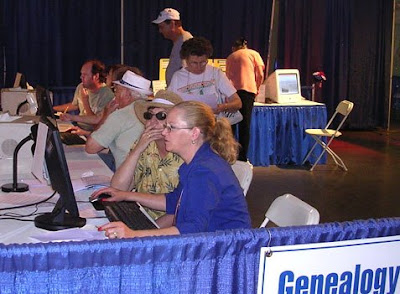Rose Pierson of FamilySearch Indexing sent some statistics on the San Francisco Mortuary Project. She will be sending reports weekly.
The project includes 38,837 total images in 3,883 total batches.
After 24 hours:
814 total images have been indexed (81 batches)
1560 images checked out for A indexing (156 batches)
1140 images checked out for B indexing (114 batches)
I found time to process a couple of batches. The records were from 1895 (pre-earthquake!) and included one child who died at age 8 of tubercular meningitis. With the missing 1890 census, this is a child who never appeared in a U.S. census. The record gave her mother’s name, another name that may be a sister and a note that she was placed in a vault in May 1895 and shipped to Albuquerque, New Mexico the next January (1896). Good stuff!



